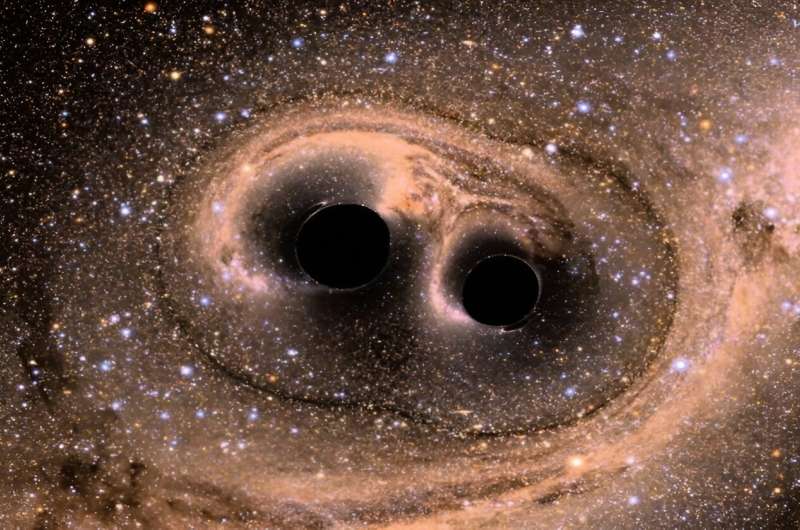This article has been reviewed according to Science X's editorial process and policies. Editors have highlighted the following attributes while ensuring the content's credibility:
fact-checked
trusted source
proofread
Deciphering gravitational waves

When two black holes collide, the impact is so big that we can detect it all way here on Earth. These objects are so immense that their collisions send ripples through spacetime itself. Scientists call these ripples gravitational waves. Although Albert Einstein predicted the idea of gravitational waves all the way back in 1916, physicists didn't directly detect them until 2015 at LIGO (the Laser Interferometer Gravitational-Wave Observatory).
Now, scientists supported by the Department of Energy's Office of Science along with several other federal agencies are working to better understand these gravitational waves and what they can tell us about black holes.
Along with being very powerful, these collisions have incredibly complex physics. To be accurate, the computer simulations of them must be complex as well. The simulations need to include every step of the process: black holes spiraling towards each other, merging, becoming a distorted black hole, and then settling down into a single black hole. This process is so complex that scientists need supercomputers to run the simulations.
The physicists then compare the numerical data from these simulations to models of the process. Older versions of the models showed the gravitational waves not influencing or interacting with each other. However, scientists suspected this wasn't accurate. Think about two people standing next to each other in a pool, making waves. If each one of them is making very small waves, it's possible the waves won't interfere with each other. They'll die out before they interact. But, if both people are making large waves, the waves will crash into each other and create new waves. Knowing that the collisions produce strong gravitational waves, scientists thought that they would interact with each other—it just wasn't showing up.
A team of researchers from Caltech, Columbia University, University of Mississippi, Cornell University, and the Max Planck Institute for Gravitational Physics ran a new, more detailed analysis of these numerical outputs. This analysis showed evidence of gravitational waves interacting with each other, as expected. Each wave causes the others to change slightly. The interactions create new types of waves with their own independent frequencies. These new waves are smaller, more chaotic, and more unpredictable than the original ones. By including this feature in the models, the scientists can more accurately describe what the numerical outputs are telling them.
Adding these interactions into the models of colliding black holes will make the models more accurate. In turn, these models will help us better interpret real-world observations. The more accurate the models are, the more useful they are for interpreting data from LIGO.
In addition, better models can help scientists figure out if general relativity is the right theory to explain what actually happens in black holes. While general relativity—the famous theory developed by Einstein—broadly explains how gravity affects spacetime, how well this theory applies to the strange properties of black holes is still to be determined.
Black hole collisions are unimaginably far from Earth and our everyday lives. While we can't feel gravitational waves ourselves, the data and models scientists make are expanding our knowledge of these incredible phenomena every day.
Provided by US Department of Energy



















